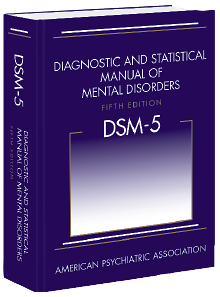DSM-5 is open for editing, revision, and update—on a continuous basis.
The availability of a publicly accessible portal on the APA website for submitting proposed updates and changes to DSM-5 is approaching its one-year anniversary. Creation of the portal last December was the first step toward creating the “living document” that the DSM-5 Task Force envisioned for the future of DSM and the development of a process allowing incremental updates to the text as new research evidence accumulates.
That process replaces the extremely lengthy, expensive, and time-consuming process that characterized the development of past editions of the diagnostic manual.
“The old system, prior to the advent of the Internet, involved revising the whole manual at very substantial intervals—the last major revision prior to DSM-5 was in 1994,” said past APA President Paul Appelbaum, M.D., who is chair of the DSM Steering Committee. “That meant that changes that were clearly warranted by evidence that accumulated throughout the period had to wait for the wholesale revision.”
Now, seizing on the opportunity afforded by digital communication, a process exists for changes to be made to DSM as warranted by the weight of new evidence. “We want APA members, other mental health clinicians, members of the research community, and members of the public to know that this is a process they can participate in,” Appelbaum told Psychiatric News. “The website portal is available, and the process is in place to make changes.”
Visitors to the portal are guided through steps to submit proposals for the following specific kinds of revisions:
•
Changes to an existing diagnostic criteria set that would markedly improve its validity.
•
Changes to an existing diagnostic criteria set that would markedly improve reliability without an undue reduction in validity.
•
Changes to an existing diagnostic criteria set that would markedly improve clinical utility without an undue reduction in validity or reliability.
•
Changes to an existing diagnostic criteria set that would substantially reduce deleterious consequences associated with the criteria set without a reduction in validity.
•
Addition of a new diagnostic category or specifier.
•
Deletion of an existing diagnostic category or specifier/subtype.
•
Corrections and clarifications, including changes aimed at improving the understanding and application of an ambiguous diagnostic criterion, specifier, or text.
Five review committees have been put in place to consider updates that involve substantive changes to the following areas. A separate subcommittee will consider minor editorial changes to the text. These are the committees:
•
Neurodevelopmental Disorders (Intellectual Disability, Learning, Communication, Autism Spectrum, Attention-Deficit/Hyperactivity, Motor Disorders)
•
Serious Mental Disorders (Schizo-
•
Internalizing Disorders (Depressive, Anxiety, Trauma, Obsessive-Compulsive, Dissociative, Somatic Symptom Disorders)
•
Externalizing Disorders and Personality Disorders (Personality, Disruptive, Impulse Control, Conduct Disorders, Substance Use Disorders, Paraphilic Disorders)
•
Body Systems Disorders (Feeding and Eating, Elimination, Sleep-Wake Disorders, Sexual Dysfunction, Gender Dysphoria)
Portal visitors submitting changes should include their name and contact information, institutional affiliation, and area of research interest. For each type of revision, visitors must provide summary evidence regarding the validity, reliability, clinical utility, and potential deleterious consequences of making the proposed change.
Importantly, the threshold for determining when a substantial change to diagnostic criteria is warranted has been set relatively high. “Insofar as the criteria for making a change are based on the generation of new evidence, we will be looking for clear evidence supporting proposed changes that go above and beyond what might have existed at the time DSM-5 was written,” Appelbaum said.
In other words, the update process is not a place to revisit debates about various diagnostic criteria that accompanied development of DSM-5. Rather, it is reserved for the consideration of fresh evidence generated by new research since the manual was published.
Appelbaum said two competing values have guided the creation of the update process: the need to keep up with research and the need to maintain stability and consistency in the text. “We want to guarantee stability because clinicians need time to get used to specific criteria,” he said. “You don’t want to make changes too often—it’s confusing for patients as well as clinicians and disruptive to researchers who rely on the criteria for recruitment of subjects into trials.
“The whole point of the update process is to balance that need for stability with the importance of incorporating relevant new knowledge as it becomes available,” Appelbaum continued. “As evidence based as this process has been designed to be, this and any other approach to constructing or altering the diagnostic framework will inevitably involve a certain amount of judgment. The question will always be, When all the available data are in hand, how much evidence is enough to warrant a change? I don’t think there is an algorithm to answer that question.”
Appelbaum said he is aware of several groups of clinician researchers who are working to submit important changes to the manual. But in the nearly 10 months since the portal has been open, proposed revisions have been very few and relatively minor—an editorial correction to the criteria for acute stress disorder and the addition of ICD-10-CM codes for substance use disorder in remission. “For much of the year, the phone has been silent,” Appelbaum told APA trustees during a report on the process at the July meeting of the Board of Trustees.
It’s possible that the small number of proposed changes may be because the process and criteria for making a substantive change are too restrictive, and if so Appelbaum said the steering committee would consider amending the process. In the meantime, however, he said it is more likely that clinicians and researchers are not sufficiently aware that a process exists.
“We want to make an effort to spread the word and publicize the existence of this process before we conclude that the criteria are too strict,” he said. ■
Proposals for changes to
DSM-5 may be submitted on the
DSM homepage. The
DSM-5 Update Supplement and ICD–10–CM Coding Updates can also be accessed on this page.


